Throughout its history, France has been a formidable military power. This is particularly true when considering key historical episodes such as the French Revolution, Napoleon Bonaparte’s European conquests, and, more recently, the World Wars. Brush up on your tumultuous European military history at Les Invalides in the heart of Paris.
Generally speaking, military-themed museums tend to attract limited international tourist interest. Concepts like patriotism, honor, or victory hold different meanings for different people. Additionally, the frequent glorification of war and oppression of other nations can make such places problematic, at least from my perspective. That said, the Musée de l’Armée in Paris is a notable exception, and I will explain why below.
The Musée de l’Armée (Army Museum) is located in central Paris. Its origins as the institution we see today date bak to 1905 after the merger of the Artillery Museum and the Army History Museum collections.

It is located in the Hôtel des Invalides (House of the Invalids), a vast former hospital and complex that includes a chapel, a cathedral, three museums, and several monuments. Additionally, it features a section dedicated to medical care for soldiers and veterans of the French army.
Do not miss:
If you have strolled through Paris and climbed to one of its panoramic viewpoints, or even if you have seen photos of its skyline, you will likely recognize the distinctive golden dome that tops the building. This large dome, one of the most recognizable symbols of the French capital, crowns the tomb of Napoleon Bonaparte.
Les Invalides: is it worth visiting?

As I mentioned earlier, military museums generally might not attract foreign visitors, but the Musée de l’Armée in Paris is a must-visit for the following reasons:
- Tomb of Napoleon: Regardless of your opinion on any military museum’s patriotic and war-promoting message, Napoleon’s historical relevance and influence on European and American countries is nothing if not legendary. The Hôtel des Invalides is a must-visit in Paris for history lovers, and its mausoleum contains the mortal remains not only of the general but also of many other significant figures, including his brother Joseph Bonaparte I, King of Spain.
- It’s a remarkable building: From an architectural perspective, Les Invalides is simply spectacular. The complex features neoclassical and baroque elements to create that quintessentially Parisian palatial style, not to mention the golden dome that crowns it.
- Contiene vastas colecciones: Las colecciones de los tres museos que componen el Musée de l’Armée cuentan con medio millón de artefactos que incluyen armas, documentos, uniformes, indumentaria, obras de arte (algunas de las cuales provienen del Louvre) y maquetas a gran escala.
- The historical exhibitions are very comprehensive: The thoughtfully designed historical tours in the rooms aid in understanding various aspects of the France participated in, including its collaboration with the Nazis during World War II and Vichy France.
- It hosts the Musée des Plans-Reliefs: Interestingly, the Invalides complex also includes a collection of military models created between 1668 and 1870 to help French monarchs and generals plan their attacks.
For all these reasons, this attraction is a must-see both for a first trip to Paris or a second (or third) visit to the city.
The Hôtel des Invalides: Brief History

Hôtel des Invalides was created by Louis XIV in 1670. As its name suggests, this grand “house for the invalids” was intended to serve as a hospital for soldiers injured in battle. Up until that point, war casualties often found themselves in miserable conditions: disabled, traumatized, and unable to return to work once they got home. As a result, many ended up begging on the streets. For the king, this created two problems—firstly, beggars in the streets of Paris presented a very poor image of the monarchy. Secondly, many recruits deserted after witnessing how injured soldiers were treated.
Historically, French aristocrats were never particularly interested in altruistic motivations when it came to their subjects; in fact, their constant disregard for the oppressed classes would cost them dearly a hundred years later. For the “Sun King,” constructing a palatial hospital for war-wounded soldiers was an investment that would boost recruits’ morale while simultaneously removing those bothersome amputee beggars who gave such a poor impression in the capital’s streets. Additionally, such a structure had the added benefit of creating a monument showcasing strength and compassion.
The Hôtel des Invalides location is on a formerly wooded plot on the outskirts of Paris, “Plain of Grenelle,” in the extramural district of Gros-Caillou. For its construction, Libéral Bruant, the king’s architect, chose a sober and classic style featuring a quadrangular building surrounding a central courtyard. In 1674, the first pavilions started welcoming their first residents, wounded and retired soldiers who were no longer fit for service.
The next step was to build the church. Jules Hardouin-Mansart supervised the early project plans. At the time, he was an unknown apprentice to Bruant, who would later become the greatest exponent of French Baroque architecture. Hardouin-Mansart designed the church, infirmaries, and entrance pavilions. It took 30 years to complete the construction of the church. In 1706, on the morning of Louis XIV’s 68th birthday, he was finally handed the keys to the complex.
When Napoleon Bonaparte became the First Consul of France at the beginning of the 19th century, he faced a challenge reminiscent of Louis XIV’s: earning soldiers’ loyalty. By then, Les Invalides was already an unmistakable symbol of military power in France, so he held the first-ever ceremony for awarding the Legion of Honor medals just after being crowned Emperor.
Visit to the Hôtel des Invalides, Musée de l’Armée and the Tomb of Napoleon Bonaparte
With a museum housing over 500,000 artifacts, it’s clear that there’s no way to see all its pieces in a single day. Fortunately, the Musée de l’Armée contains several sections and areas, each with its own collections. This makes the experience more manageable. Here are some of its main rooms:
Main Courtyard: Artillery Collections
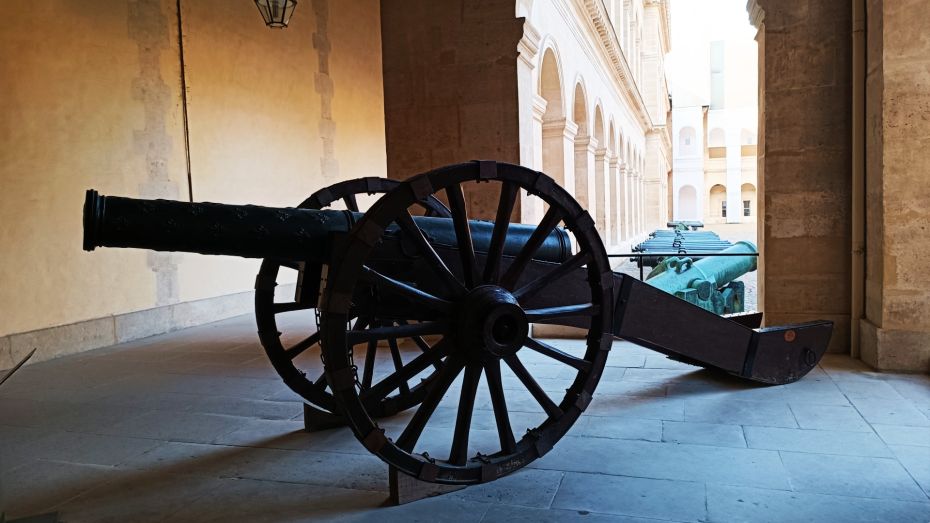
This is the first area you encounter upon entering the Hôtel des Invalides for the first time. The courtyard hosts an exhibition of 60 military cannons that span multiple periods over the 200 years of the French Revolution.
The Contemporary Department: The Two World Wars
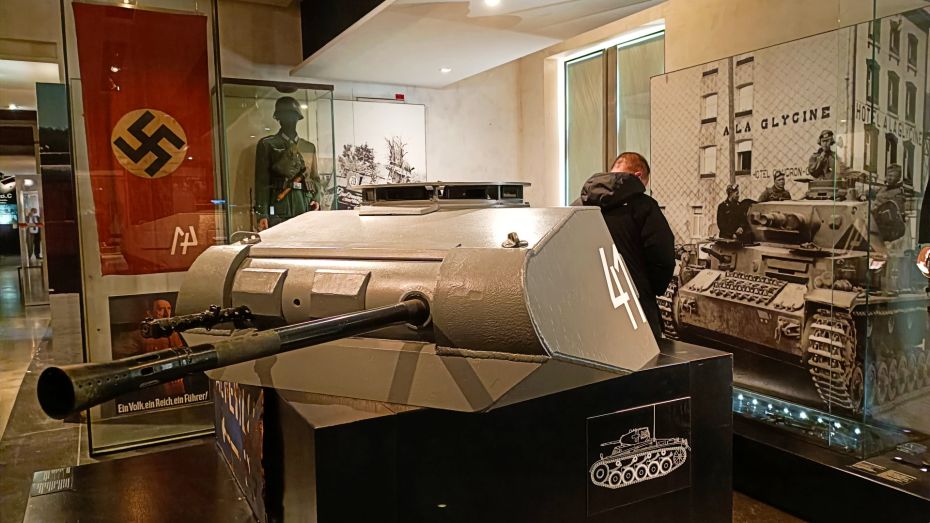
This section showcases artifacts from two of the most significant periods of conflict in contemporary history. The exhibit features uniforms, swords, tanks, photographs, and maps. Additionally, multimedia rooms and screens with documentaries and interviews provide context to the items displayed.
Modern Department
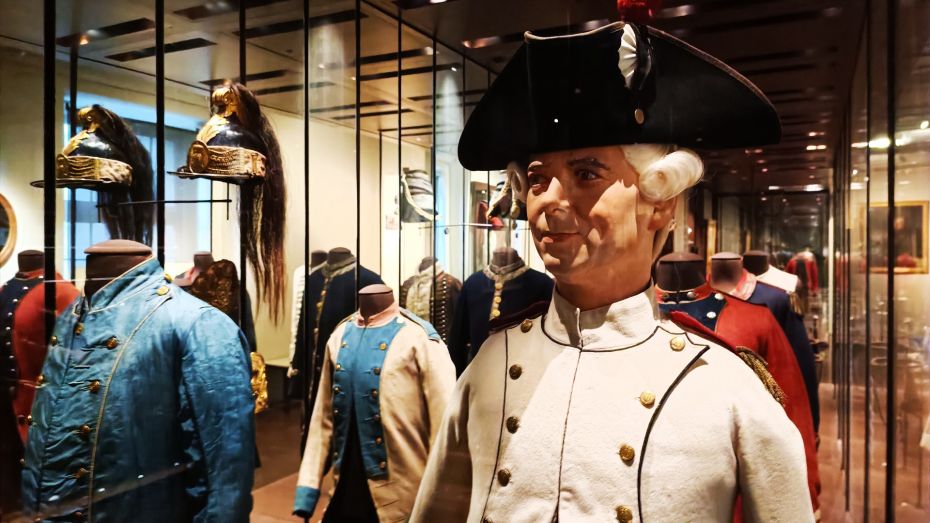
This collection is dedicated to the battles and wars in which the French army participated from 1643 to 1870, including the French Revolution and the Napoleonic Wars. Of particular relevance are the artifacts, attire, and even (taxidermied and majestic) Napoleon Bonaparte’s famous white horse.
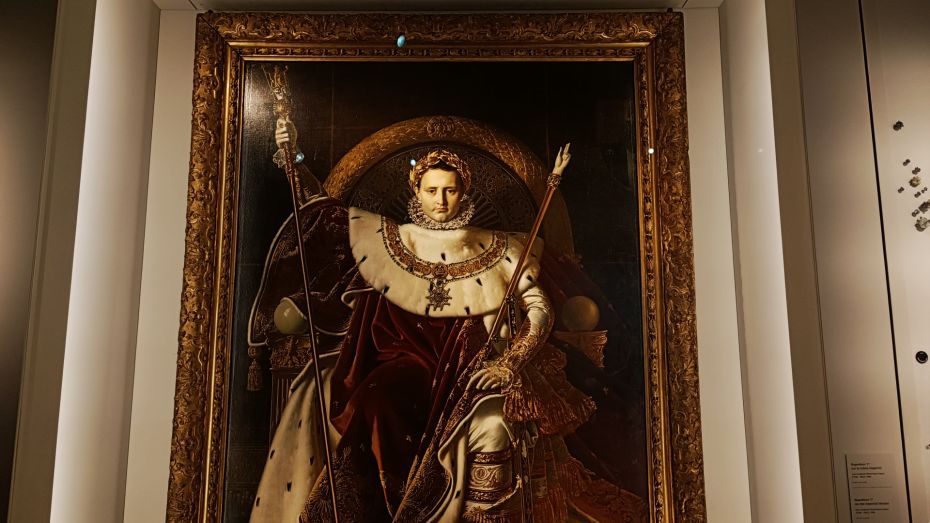
Ancient Armor and Weapon Collection – 13th to 17th Centuries
If you’re traveling with children, this is the collection from the Musée de l’Armée to visit. The museum’s section on ancient armor and weapons is one of the largest in Europe. The best part is that the artifacts aren’t limited to French weaponry. There are also items originating from around the world, including East Asia.
Musée des Plans-Reliefs
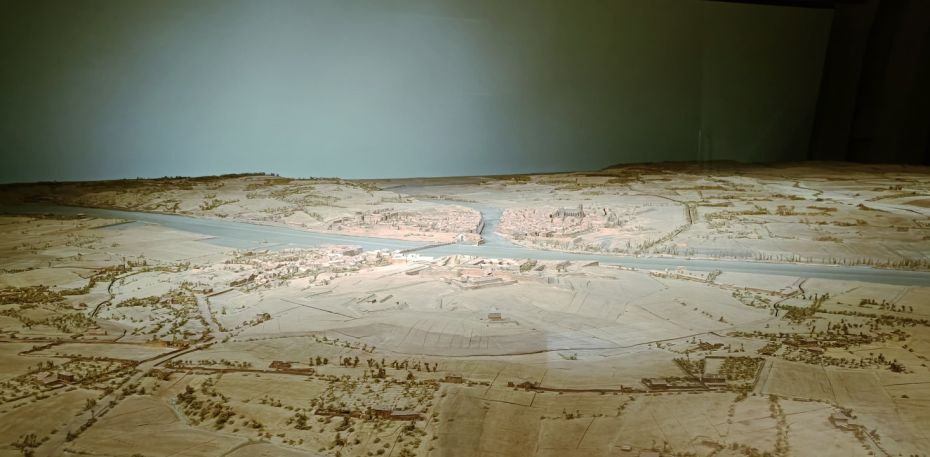
This area is home to over one hundred intricately crafted scale models, some as large as a Parisian apartment. In an era without reconnaissance satellites, airplanes, or drones, their original function was to assist French monarchs in planning their attacks from a bird’s-eye view. This exceptional collection, which dates as far as 1668, was in danger of disappearing when its original home in the Louvre opened as a public art museum.
Church of Saint-Louis des Invalides
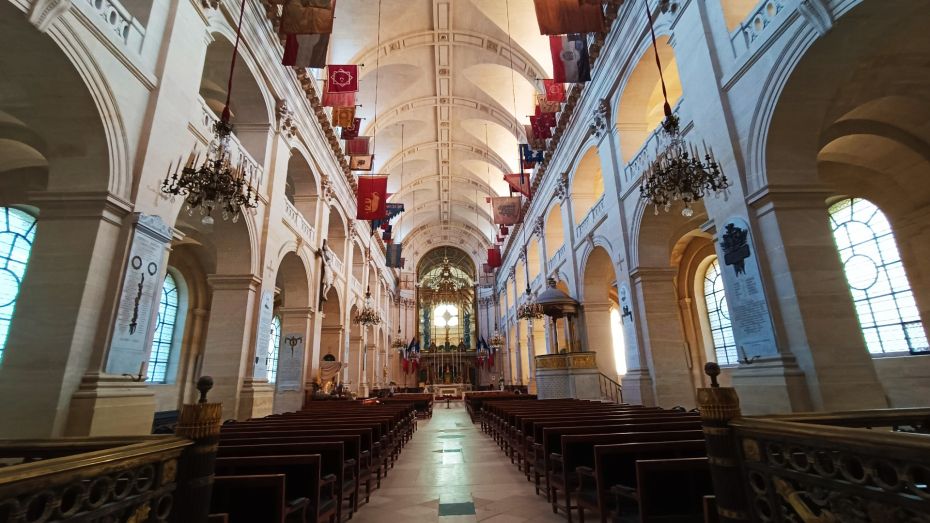
The church is famous for its passive-aggressive curious decoration based on flags captured by during various battles. The upper balconies include Austrian flags dating back to the Battle of Austerlitz in 1805 and a Neapolitan flag from 1806.
A large stained-glass window separates the Church of Saint-Louis des Invalides from the Invalides Dome, which houses Napoleon Bonaparte’s tomb. This separation dates to 1873. Before that, the altar separated the two parts of the church, making the priest contort himself to celebrate mass in front of soldiers and the royal family simultaneously. Fortunately, the kings rarely attended mass here. Louis XIV came only three times.
Napoleon Bonaparte’s Tomb and Dome of Les Invalides
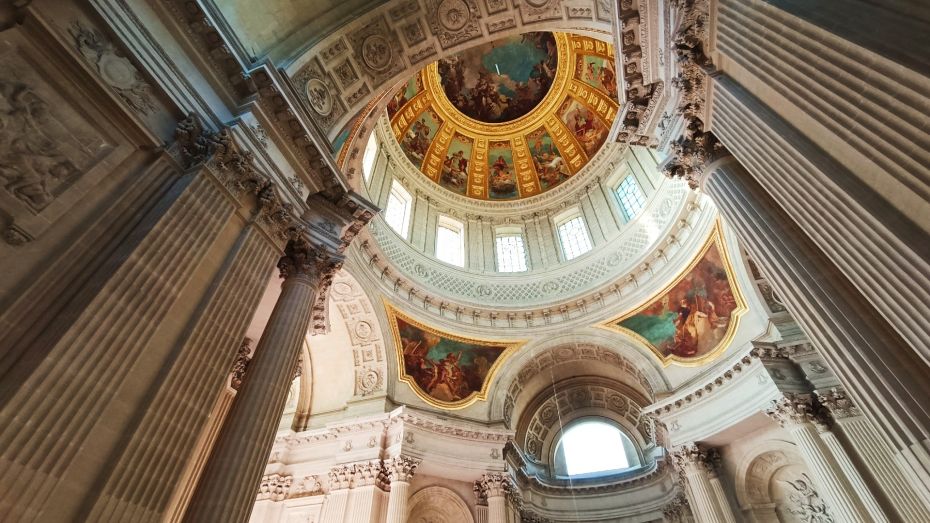
If you landed on this article simply because you were wondering where Napoleon Bonaparte‘s remains rest, I apologize for the anticipation-filled detour I’ve taken to get to the answer: He (or rather his ashes) lay in a grand red marble mausoleum under the dome of Les Invalides. However, it wasn’t always this way.
When Napoleon passed away in 1821, his remains remained on the island of Saint Helena, where he died. In 1840, King Louis-Philippe decided that Napoleon’s body belonged in Paris, the only acceptable place for Bonaparte to spend eternity.
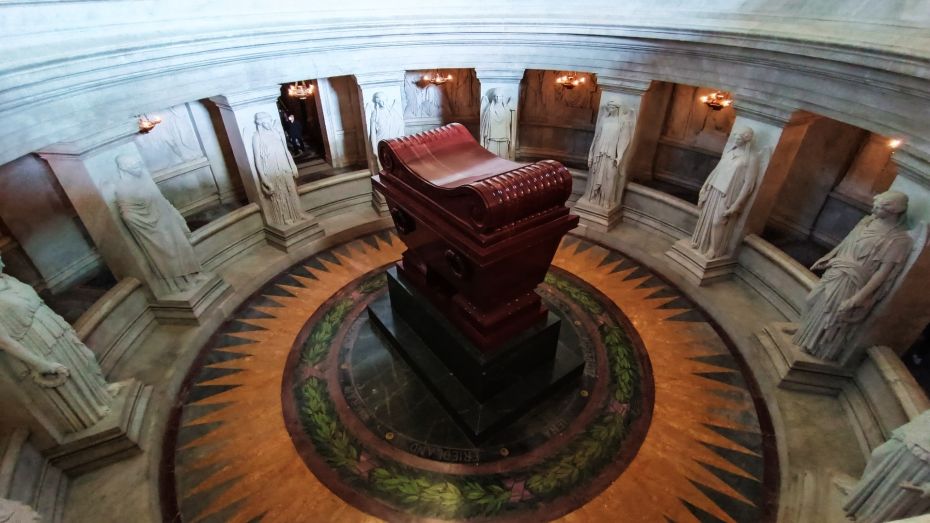
On December 15, 1840, the government held a grand national funeral, and the emperor’s body, recently repatriated to the capital, spent some time at the crypt of the Chapel of Saint Jerome. On April 2, 1861, in the presence of his nephew, Napoleon III, the casket was moved to the Chapel of Les Invalides and placed in a classic Roman-style marble sarcophagus in the center of a circular uncovered crypt—a more fitting place for a figure such as Napoleon Bonaparte.
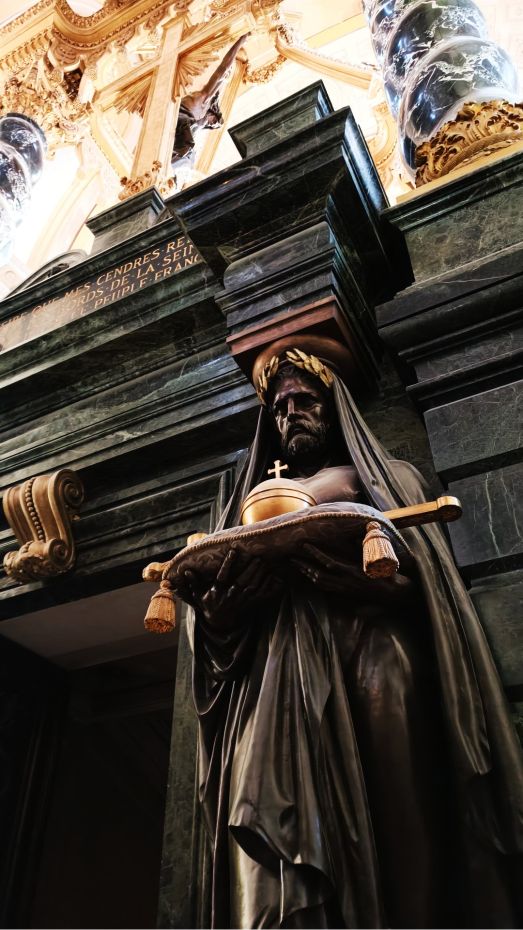
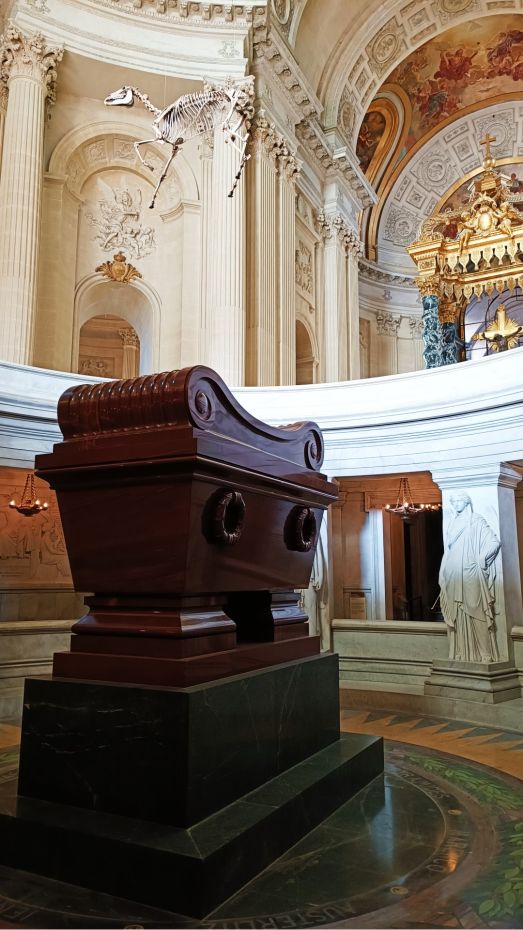
Visitors enter the crypt via a staircase and through a heavy bronze door forged from cannons used in the Battle of Austerlitz, flanked by two monumental statues. Above the lintel is the following inscription:
«I wish that my ashes rest on the banks of the Seine among the people of France whom I loved so much.»
The sarcophagus is on a green granite pedestal made of green granite. Inside, it contains six coffins: Firstly, one made of iron, another of mahogany, two more of lead, one of ebony, and finally, the last one of oak. Napoleon’s remains are dressed in his colonel uniform of the Guard’s cavalry and his Légion d’Honneur sash. His hat rests on his legs.
On the ground, a polychrome mosaic illustrates the Empire’s most significant battles, while twelve enormous statues of Pradier’s Victory adorn the crypt’s pillars.
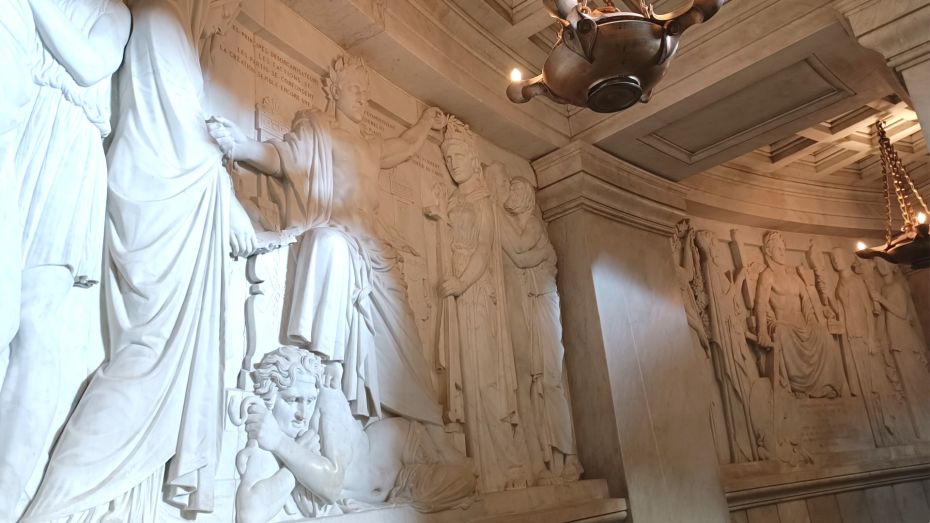
The circular gallery houses ten white marble bas-reliefs, all depicting episodes from Napoleon’s reign.
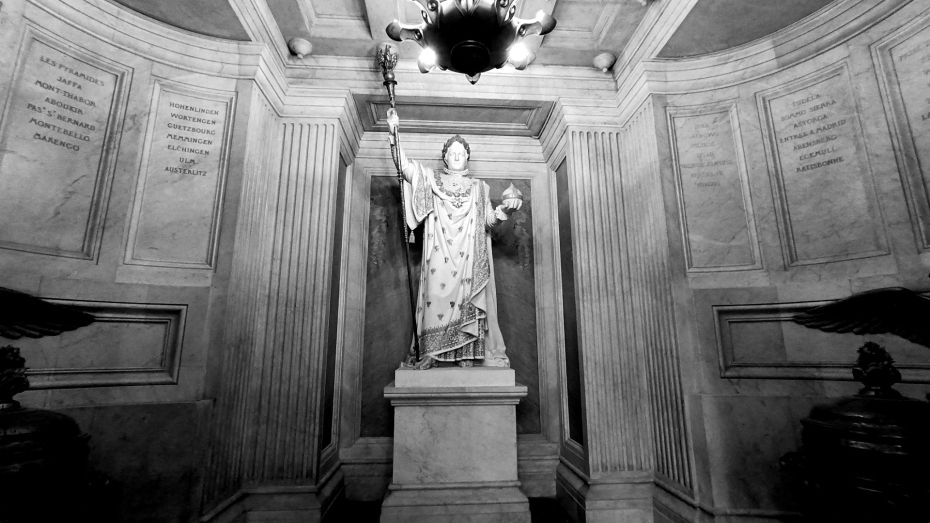
In the middle of the gallery is a vault holding the coffin of Napoleon II, King of Rome. Atop the tomb stands a statue by Simart, depicting Napoleon as a Roman emperor. Talk about megalomaniac delusions of grandeur!
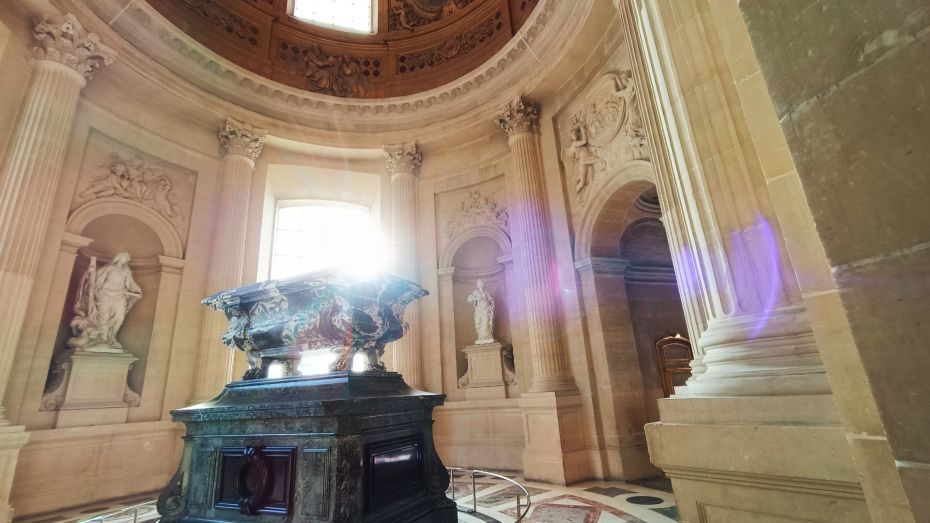
Inside the church, two side chapels house the tombs of Joseph and Jérôme Bonaparte, along with notable French military figures.
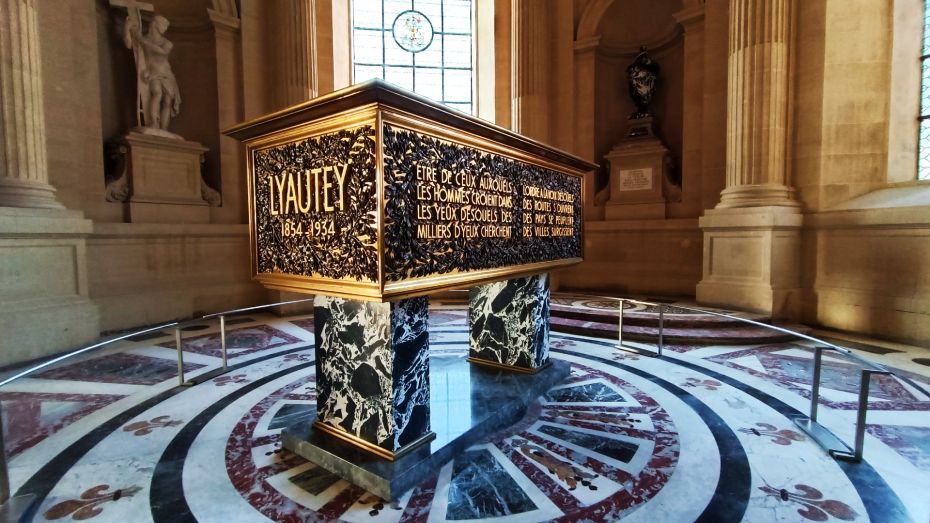
Les Invalides: Plan your visit
Address
Hôtel national des Invalides
129, rue de Grenelle
75007 Paris
Tél: +33 (0)1 44 42 38 77
The nearest metro and train stops are Invalides (lines 8, 13, and RER C), Varenne (line 13), and La Tour-Maubourg (line 8).
Opening hours of the Hôtel des Invalides and Napoleon’s Tomb
- From Wednesday to Monday from 10:00 a.m. to 6:00 p.m.
- Tuesday from 10:00 a.m. to 9:00 p.m.
- Closed on January 1, May 1, and December 25.
The ticket office closes 30 minutes before the official closing time.
Hôtel des Invalides and Napoleon’s tomb: Ticket prices
General rates:
- Wednesday to Monday from 10:00 AM to 6:00 PM.
- Tuesday from 10:00 AM to 9:00 PM
- Closed on January 1st, May 1st, and December 25th.
We recommend purchasing tickets in advance online. The Paris Museum Pass includes access to the complex.


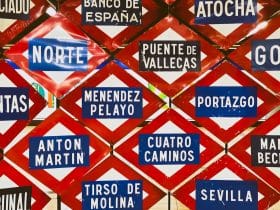


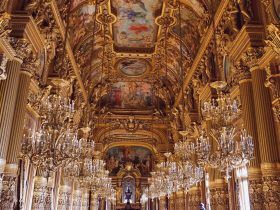



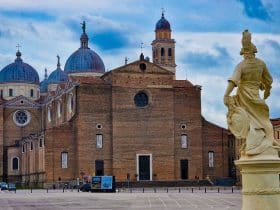

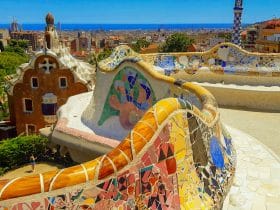












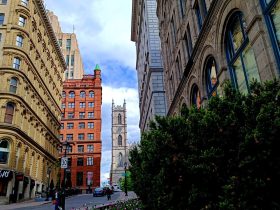
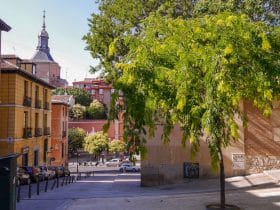


Leave a Reply
View Comments